Security Deposit Return Letter Samples
-
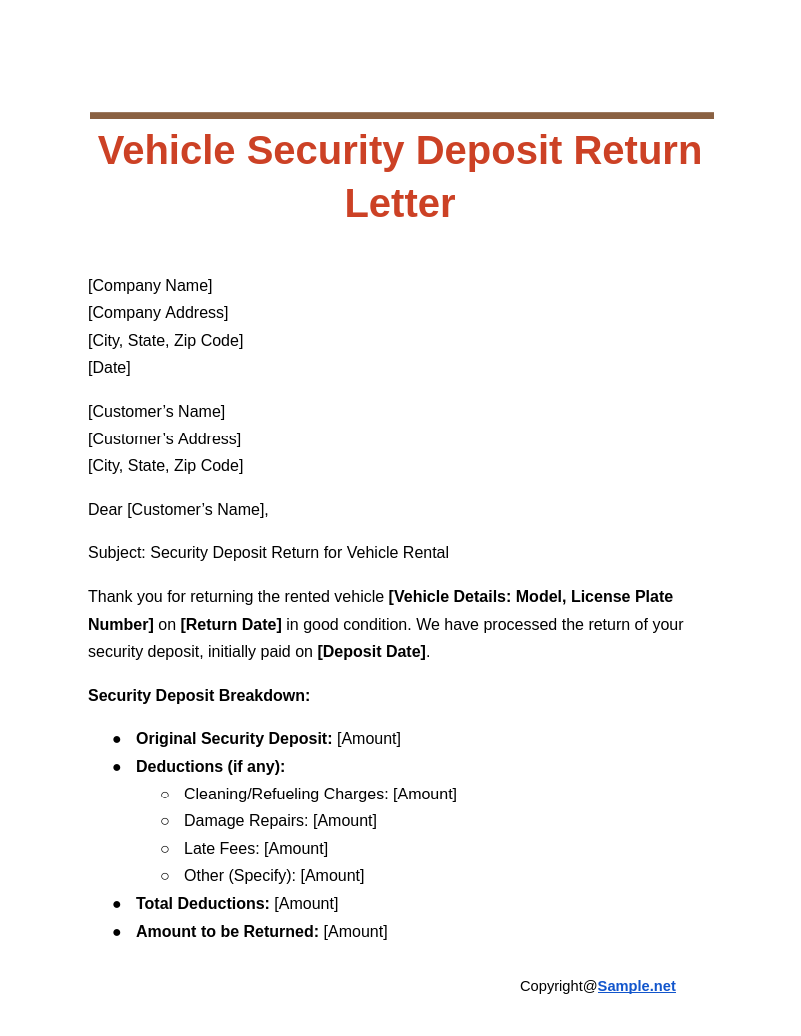
Vehicle Security Deposit Return Letter
download now -

Security Deposit Return Letter to Company
download now -

School Security Deposit Return Letter
download now -
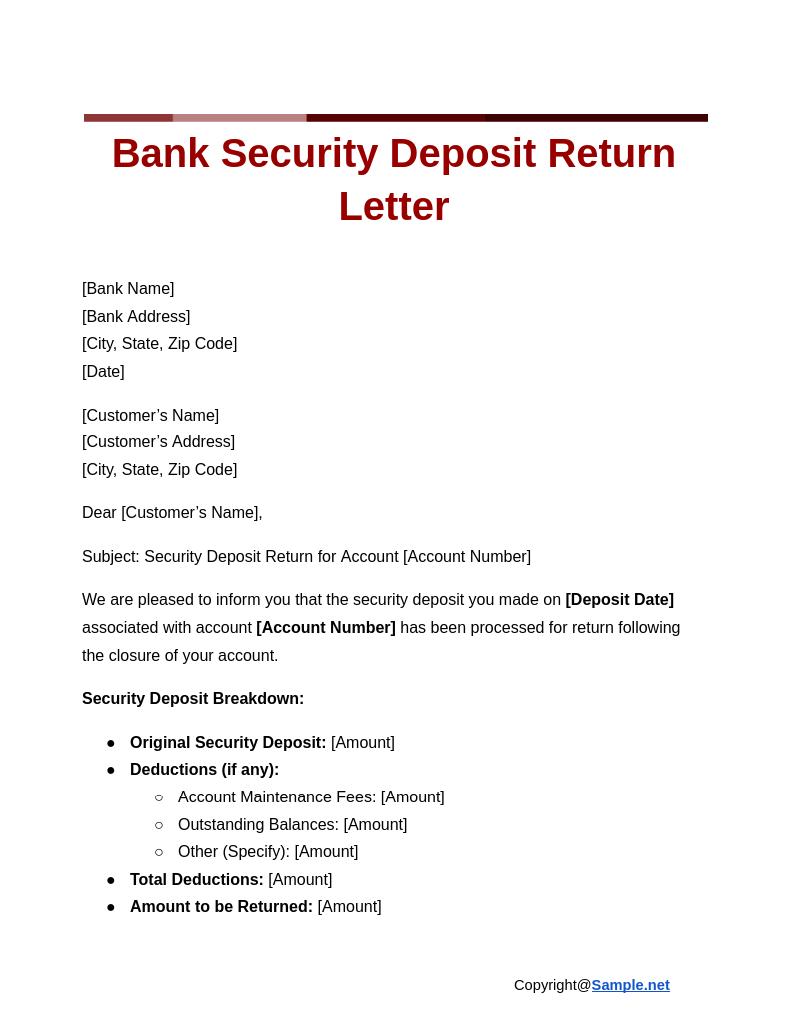
Bank Security Deposit Return Letter
download now -
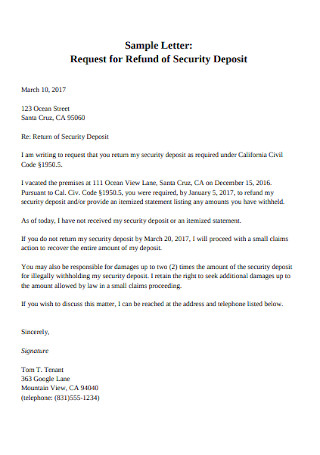
Security Deposit Return Letter
download now -
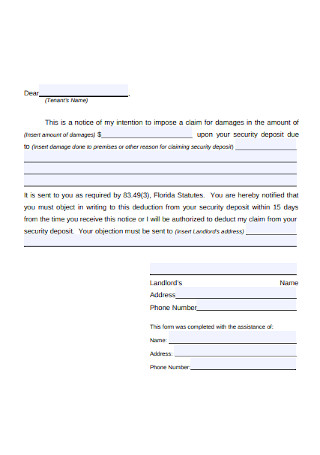
Security Deposit Return Letter Sample
download now -
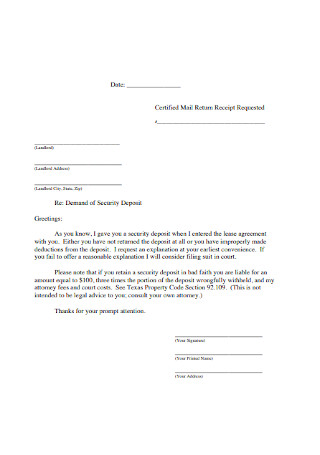
Property Security Deposit Demand Return Letter
download now -
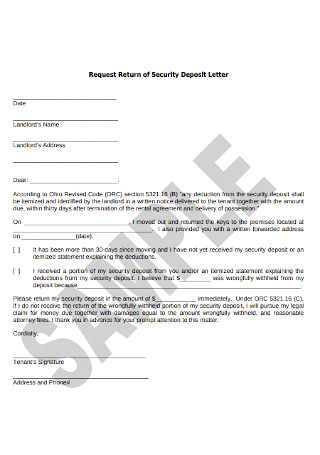
Security Deposit Return Refund Form Request Letter
download now -
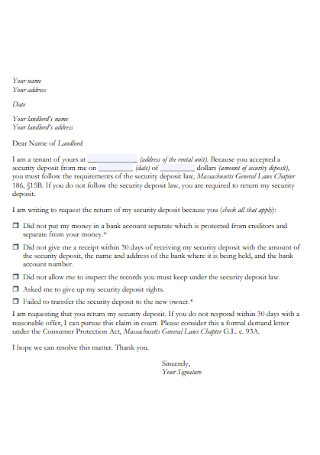
Landlords Security Deposit Return Request Letter Sample
download now -

Apartment Security Deposit Letter Requesting
download now -

Landlord Security Deposit Return Letter Sample
-
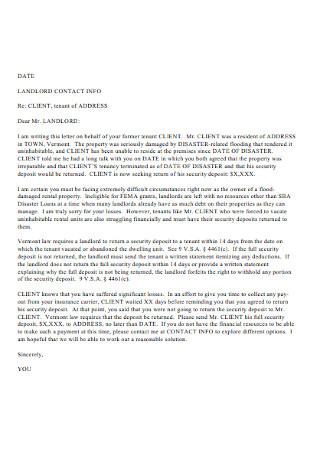
Tenant Security Deposit Return Letter
-
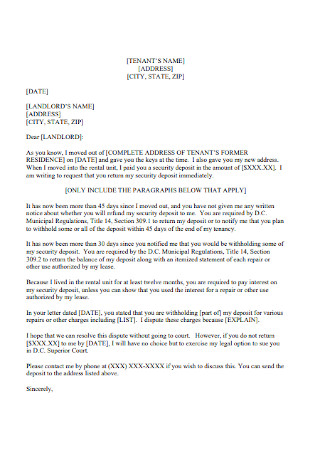
Rental Security Deposit Return Letter Sample
-

Rental Property Security Deposit Return Letter
-
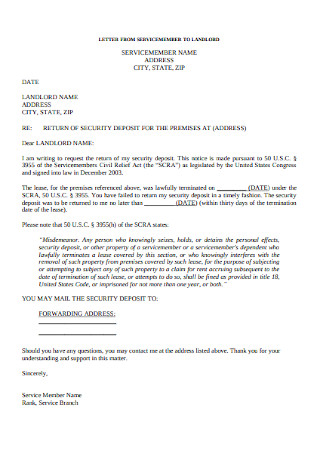
Sample Landlord Security Deposit Return Letter
-
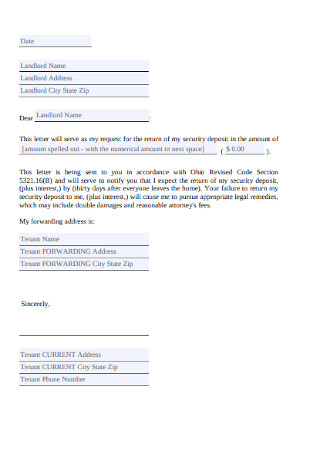
Security Deposit Return Demand Letter
-
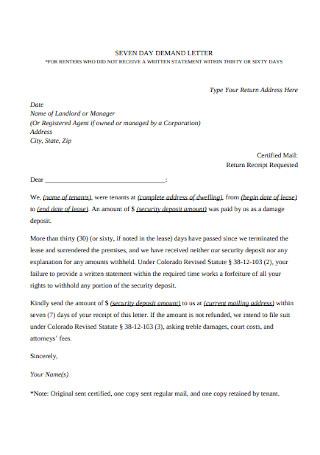
Security Deposit Return Demand Letter
-
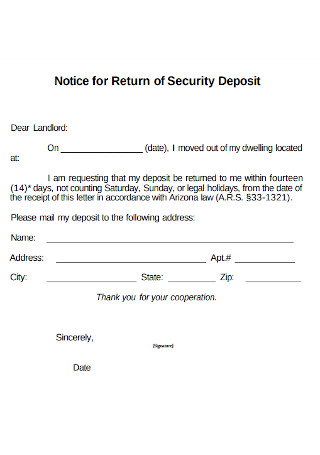
Notice Letter for Return of Security Deposit
-
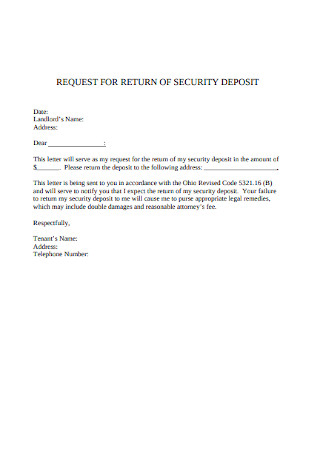
Sample Security Deposit Return Request Letter
-
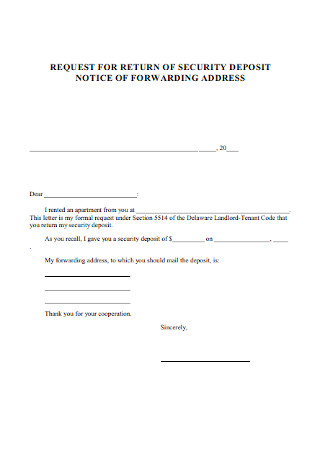
Basic Security Deposit Return Request Letter
-
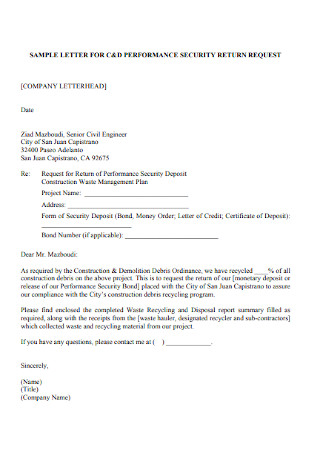
Standard Security Deposit Return Request Letter
-
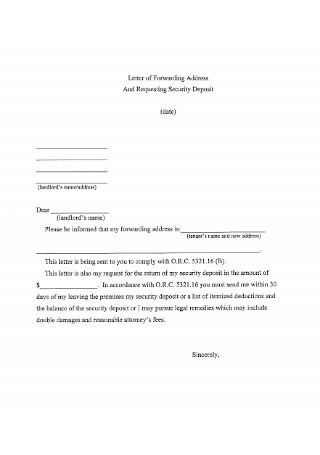
Security Deposit Return Requesting Letter
-

Security Deposit Return Form Letter
-
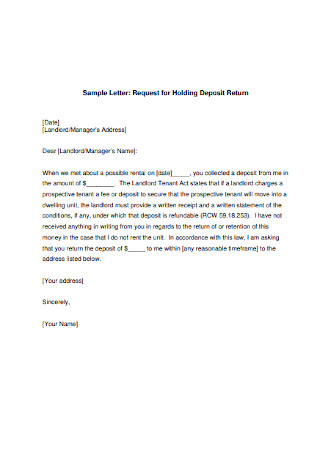
Basic Landlord Security Deposit Request Letter
-
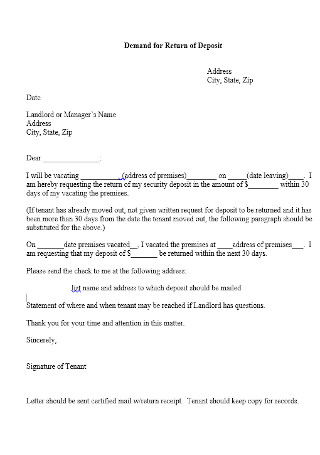
Security Demond Deposit Return Letter Template
download now
FREE Security Deposit Return Letter s to Download
Security Deposit Return Letter Format
Security Deposit Return Letter Samples
What is a Security Deposit Return Letter?
Purposes of a Security Deposit Return Letter
Types of Security Deposit Return Letters
How to Create a Security Deposit Return Letter
FAQS
Why is a Security Deposit Return Letter necessary?
What should a Security Deposit Return Letter include?
When should the letter be sent?
What happens if the landlord doesn’t return the deposit on time?
What if the tenant left unpaid utility bills?
How should tenants address disputes over deposit deductions?

Download Security Deposit Return Letter Bundle
Security Deposit Return Letter Format
[Your Name]
[Your Address]
[City, State, Zip Code]
[Date]
[Tenant’s Name]
[Tenant’s Address]
[City, State, Zip Code]
Dear [Tenant’s Name],
Subject: Security Deposit Return
We hope this letter finds you well. We are reaching out regarding the security deposit associated with the property located at [Property Address], which you rented from [Start Date] to [End Date].
According to our records, the security deposit paid at the beginning of the lease term amounted to [Amount of Deposit]. After a thorough inspection of the property and deducting costs for any necessary repairs and cleaning, the balance of your security deposit is calculated as follows:
Security Deposit Breakdown:
- Original Security Deposit: [Amount]
- Deductions (if any):
- Cleaning: [Amount]
- Repairs: [Amount]
- Unpaid Rent or Utilities: [Amount]
- Other (Specify): [Amount]
- Total Deductions: [Amount]
- Amount to be Returned: [Amount]
We have attached itemized receipts for any deductions for your reference. The remaining balance of [Refund Amount] is enclosed with this letter. Alternatively, we can transfer this amount electronically to your provided bank account if you prefer.
Thank you for being a valued tenant. Should you have any questions regarding this statement or need further assistance, please feel free to reach out to us at [Contact Information].
Wishing you all the best in your future endeavors.
Sincerely,
[Your Name or Property Management Company’s Name]
[Your Contact Information]
What is a Security Deposit Return Letter?
A Security Deposit Return Letter is an official letter sent from a landlord to a tenant, typically after the tenant has moved out of the rental property. The purpose of this letter is to confirm the final disposition of the tenant’s security deposit, detailing any deductions for repairs, cleaning, or other charges. By providing a thorough breakdown, the sample letter assures tenants that their deposit was managed responsibly, and it clarifies any potential issues that may have impacted the refund amount.
Purposes of a Security Deposit Return Letter
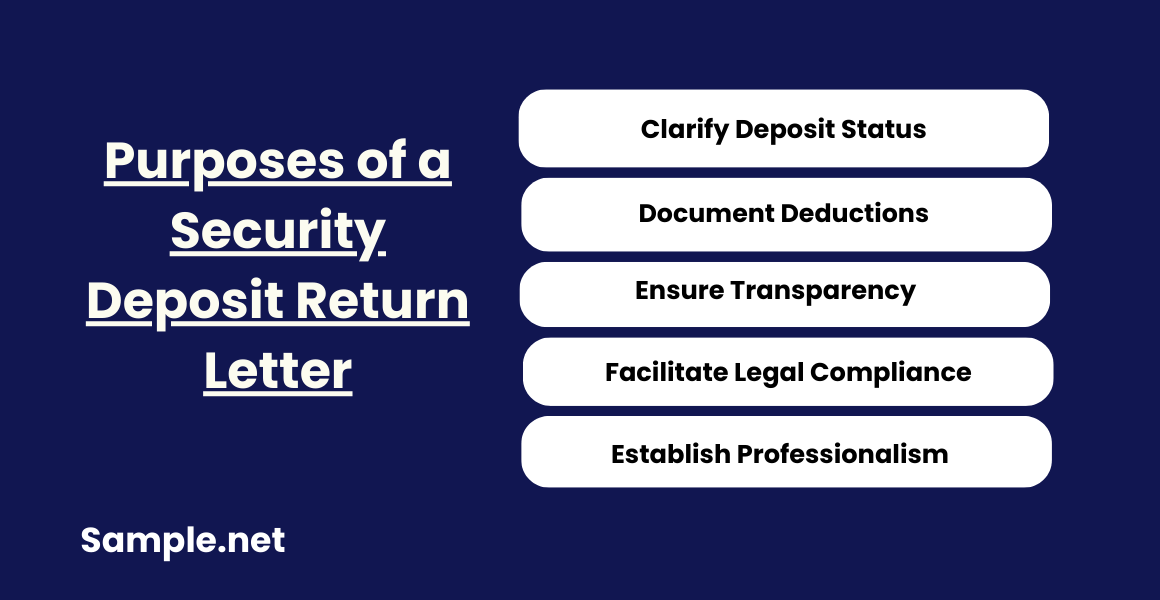
1. Clarify Deposit Status: This letter provides tenants with a clear explanation of the security deposit’s status, including any deductions.
2. Document Deductions: It serves as official documentation for any repairs, cleaning, or other charges that affected the refund amount. You can also see more on Rejection Letter for Rental Applications.
3. Ensure Transparency: By itemizing deductions, landlords can ensure that tenants understand the basis for withheld funds, reducing potential disputes.
4. Facilitate Legal Compliance: Many regions have specific laws on returning deposits, and this letter helps landlords adhere to those requirements.
5. Establish Professionalism: Using a formal letter maintains professionalism, reflecting a respectful landlord-tenant relationship. You can also see more on Authorization Letter.
Types of Security Deposit Return Letters
1. Full Deposit Return Letter: Sent when the entire deposit is returned without deductions.
2. Partial Deposit Return Letter: Includes a breakdown of deductions made for damages or other reasons.
3. Non-Return Letter: Issued if the entire deposit is withheld, usually with an explanation of major damages or unpaid rent. You can also see more on Misconduct Warning Letter.
How to Create a Security Deposit Return Letter
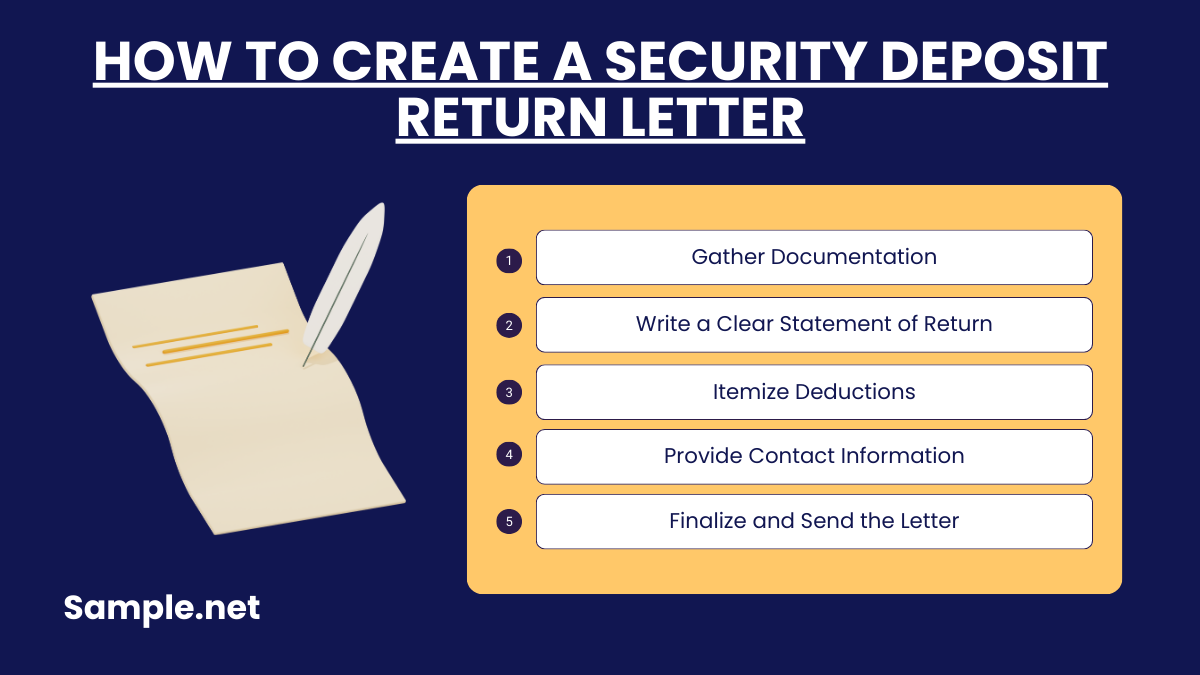
Step 1: Gather Documentation
Begin by collecting relevant information, such as the lease agreement, property condition reports, and receipts for any repairs or cleaning done. Having documentation on hand will support the accuracy of deductions, if any, and make the process smoother when you outline the deposit’s disposition to the tenant.
Step 2: Write a Clear Statement of Return
Start the letter by addressing the tenant by name and stating that the letter concerns their security deposit return. Specify the total amount of the security deposit and clarify whether the deposit is being returned in full, partially, or not at all. A clear initial statement sets expectations for the rest of the letter.
Step 3: Itemize Deductions (If Applicable)
If any portion of the deposit is withheld, itemize these charges with brief descriptions. Mention reasons such as repairs, cleaning costs, or unpaid rent, along with amounts deducted for each. This detailed breakdown ensures transparency, helping tenants understand why they are not receiving the full deposit back. You can also see more on Job Termination Letters.
Step 4: Provide Contact Information
Offer a means for the tenant to contact you if they have questions about the deductions or the return process. This shows professionalism and gives tenants an option to address any issues directly, helping to prevent potential misunderstandings or disputes.
Step 5: Finalize and Send the Letter
Conclude the letter with a respectful closing and send it along with any remaining balance of the deposit, if applicable. Ensure that you send the letter within the legally required timeframe, as promptness is often mandated by rental laws. You can also see more on Parent Permission Letter.
A Security Deposit Return Letter is crucial for both landlords and tenants. It provides transparency by itemizing any deposit deductions, showing tenants how their money was handled. Writing a clear, respectful letter helps maintain good tenant relations and prevents disputes. By following local laws and including specific deductions and documentation, landlords can finalize the rental process professionally, ensuring both parties feel satisfied with the resolution. You can also see more on Contract Letter.
FAQS
Why is a Security Deposit Return Letter necessary?
The Security Deposit Return Letter is essential to document any deductions and confirm the final amount returned to the tenant. This letter adds clarity and transparency, reducing the chances of misunderstandings. You can also see more on Approval Letters for Rental Applications.
What should a Security Deposit Return Letter include?
It should include the original deposit amount, any deductions with explanations, the final amount being returned, and contact information for follow-up questions.
When should the letter be sent?
The letter should be sent within the time frame specified by local rental laws, which often ranges from two weeks to one month after the tenant vacates the property. You can also see more on Room Rental Agreements.
What happens if the landlord doesn’t return the deposit on time?
If a landlord fails to return the deposit or provide a return letter within the specified period, they may face legal penalties or fines. Tenants can file a complaint or take legal action to recover their deposit. Laws vary, so tenants should review local regulations for specific guidance.
What if the tenant left unpaid utility bills?
In some cases, landlords may deduct unpaid utility bills from the security deposit. This typically depends on local laws and the terms of the lease agreement, so it’s essential to check these before making such deductions. You can also see more on Rent Increase Letter.
How should tenants address disputes over deposit deductions?
Tenants can first contact the landlord to discuss any disagreements. If unresolved, tenants can consult tenant rights organizations, file a formal complaint, or take the case to small claims court if they believe the deductions are unjust. You can also see more on Tenant (Landlord) Letter of Recommendation.
